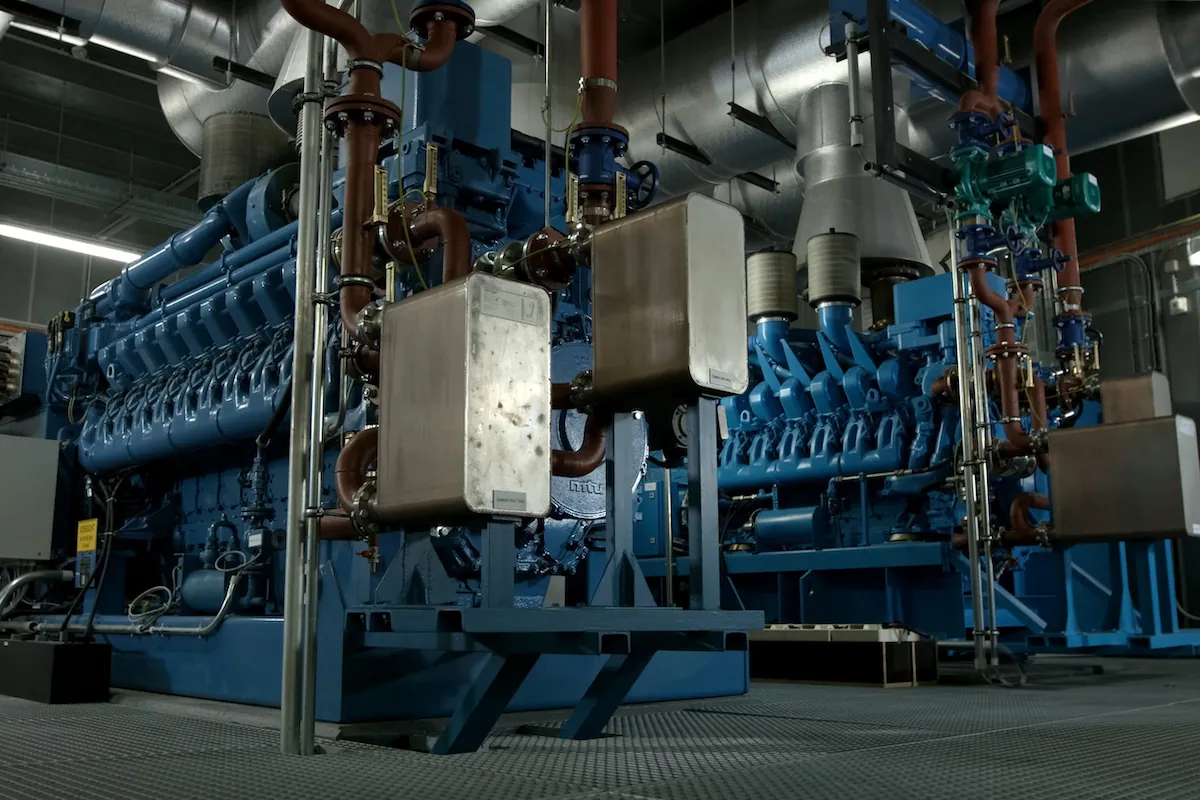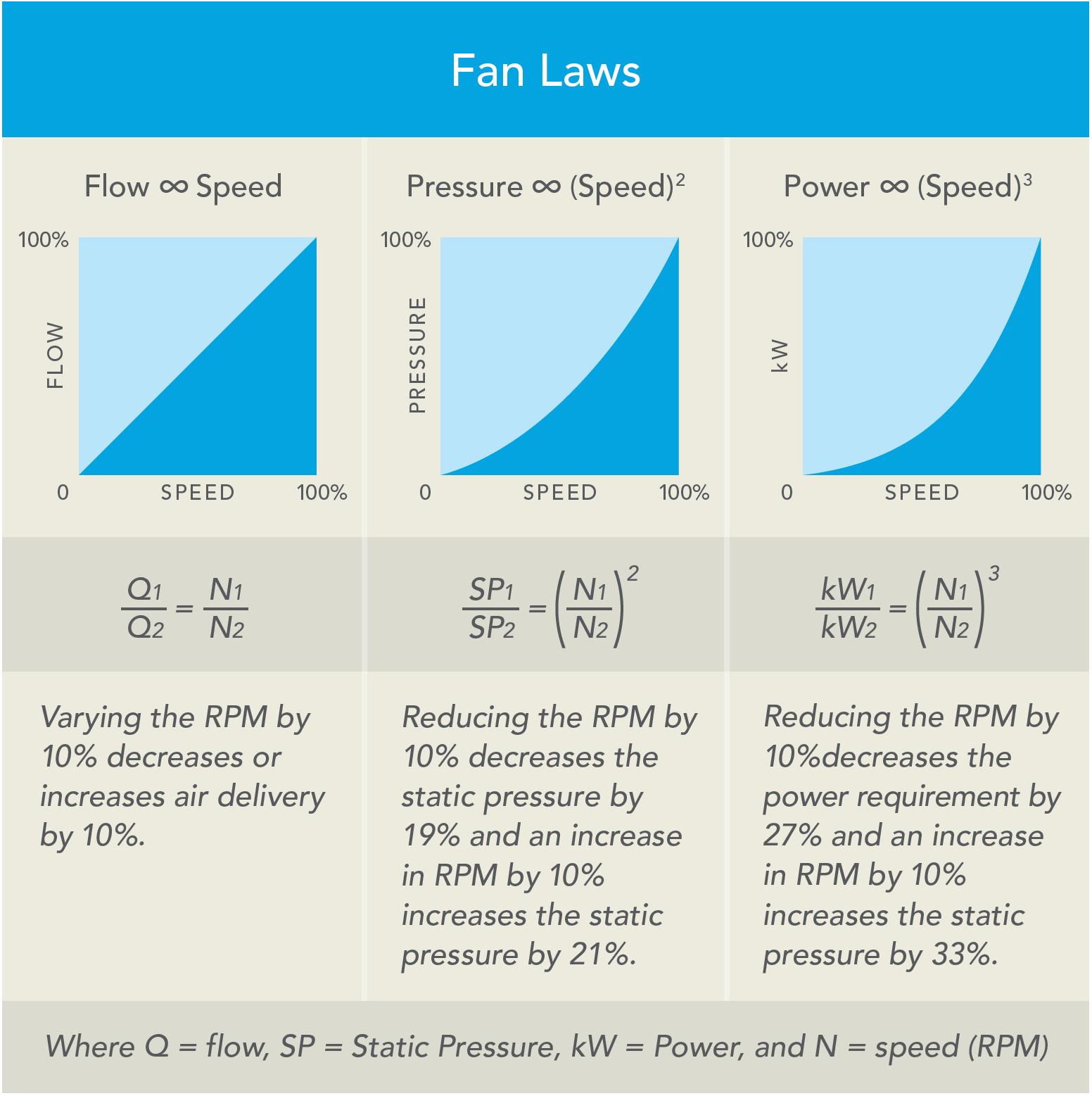[VIDEO] How Fan Affinity Laws Impact Fan Energy Savings12 min read

As we’ve previously discussed, cooling optimization is the process of making adjustments to the cooling system controls (such as raising temperature set points or reducing fan speeds). Therefore, the fan affinity laws (also simply referred to as “fan laws”) associated with flow, pressure, and power are important to understand when improving airflow management and optimizing computer room cooling for energy savings and increased cooling capacity.
For reference, the fan laws are summarized as follows:

The key takeaways from this chart are:
- Airflow is directly proportional to fan speed. If the fan speed is reduced by 10%, the flow rate will decrease by 10%.
- Pressure is proportional to the fan speed squared. If the fans speed is reduced by 10%, pressure will decrease by 19%.
- Fan energy consumption is proportional to the fan speed cubed. If the fan speed is reduced by 10%, the energy consumption will decrease by 27%.
So how does all of this translate to fan energy savings? See below:
For more on the science behind airflow management and cooling optimization, check out our recent webinar titled, Data Center Containment Best Practices: Key Considerations to Maximize ROI.
The industry's easiest to install containment!
AisleLok® solutions are designed to enhance airflow management,
improve cooling efficiency and reduce energy costs.
The industry's easiest to install containment!
AisleLok® solutions are designed to enhance airflow management,
improve cooling efficiency and reduce energy costs.
0 Comments